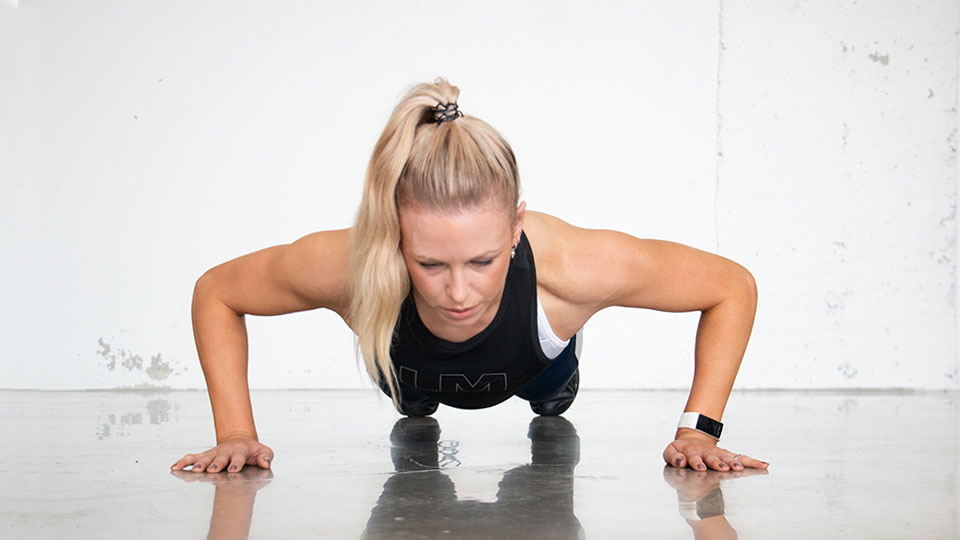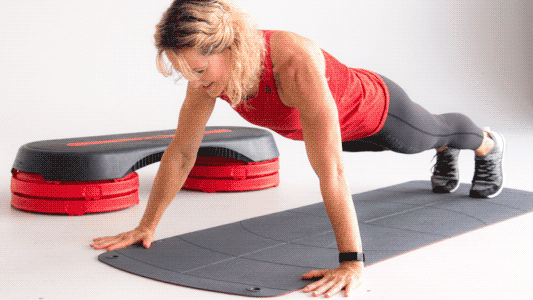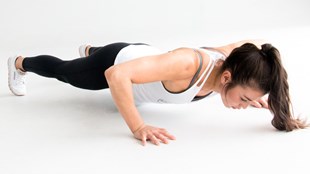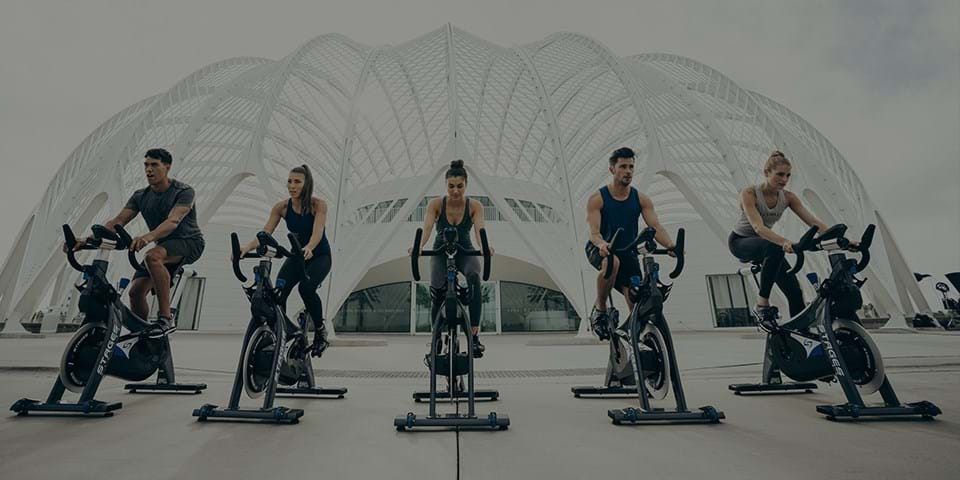Read on and you’ll discover:
- Why you shouldn't skip push-ups if you can't do them on your toes
- How push-ups are superior to the bench press
- What to do if you want to progress from knee push-ups to push-ups on your toes
- A 16-day push-up challenge
- Technique guidance – with three common push-up mistakes to avoid
For many of us, push-ups conjure up a sense of dread, which is no surprise given they have long been associated with intimidating fitness drills or physical punishment for wrongdoing. However, despite their sometimes cringe-inducing past, push-ups have secured their place as an exercise staple, and are now adored by fitness gurus across the globe. In fact, according to a 2019 study push-ups are the perfect measure of health and fitness, and the ability to do 40 full push-ups is the single best indicator of cardiovascular health and longevity for men.

While full push-ups enjoy much fanfare, the easier to manage push-up on your knees variation doesn't always get the same adoration. In fact, these modified push-ups often cop a fair bit of flack, with some labeling them as an ineffective exercise that won't get you any stronger.
Thankfully, findings published in the Journal of Applied Biomechanics have cleared up the conflict, showing that both the toe and knee variations of the push-up are worthwhile.
“Don’t leave push-ups out of your workout because you cannot perform them on your toes. Knee push-ups are a valuable alternative.”
“We have been able to demonstrate that the overall ratio of muscle activation in the upper body when you do a push-up on your knees or toes is actually the same,” says Lead Researcher, Dr. Jinger Gottschall. This means that you are training the target muscles in the same way, just using less load when you are on your knees.
This is good news for people who cannot safely or successfully perform push-ups on their toes with a full range of motion.
“Whatever you do, don’t leave push-ups out of your workout because you cannot perform them on your toes. Knee push-ups are a valuable alternative to toe push-ups in order to give your chest, shoulders and arms a quality workout, at the same time strengthening the muscles of the core,” Gottschall says.
ABOUT THE RESEARCH
In the study, 12 healthy male participants who completed strength training twice per week were measured using electromyography (EMG) signals while performing push-ups on both the knees and the toes. EMG records the electrical activity of muscle using surface electrodes attached to the skin. The study participants completed a five-minute warm-up on a stationary bike and then completed a series of push-ups on the knees and toes as well as bench presses.
What makes push-ups so good?
Push-ups are much more than just an upper-body exercise. They work the pecs, deltoids and triceps while strengthening the muscles of the core. On top of improved upper body definition push-ups build muscular endurance and create lean muscle mass that improves overall fitness and good health.
PUSH-UPS vs BENCH PRESS
During the study researchers also compared push-ups with another chest training favorite, the bench press. Study participants experienced 51 percent more activation of the abdominal muscles when completing push-ups versus bench press repetitions with parallel weight. This highlights how push-ups are the superior functional exercise. Functional exercises typically involve the integrated training of limb muscles with core muscles and are hugely valuable when it comes to training muscles to do everyday activities safely and efficiently.
There's no dispute that the most effective push-ups are push-ups on your toes, as they engage a greater amount of activation in the muscles of the upper body and core – demanding whole-body integration. However, push-ups on your toes can be pretty challenging and many people, especially older adults or individuals new to exercise, cannot safely complete multiple push-ups on their toes. All too often the hips and neck are not aligned properly and consequently, the risk of injury outweighs the rewards. "When people are struggling to lower themselves towards the ground in a toe push-up position, they shouldn't give up or feel discouraged, says Gottschall. "We can now be confident that push-ups on your knees are an effective modification."
How to progress from knee push-ups to toe push-ups
The good news is that if you do enough push-ups on your knees you'll be up on your toes in no time. Gottschall explains that as the muscle activation in knee and toe push-ups is the same if you consistently perform enough push-ups on your knees to reach a point of fatigue you will soon become strong enough to do push-ups on your toes.
Bryce Hastings, Les Mills’ Head of Research and Technical Advisor agrees with Gottschall’s advice, saying once you are confident doing 16 push-ups on the knees, then you are ready to try push-ups on your toes.
“If you feel confident doing 16 knee push-ups, you can just start to try some on your toes and see how you feel. If you need to, you can revert back to the other style until you gradually build up your strength over time to be able to do more on your toes than your knees,” he says.
TRY THE 16-DAY PUSH-UP CHALLENGE
The best push-up technique

If you want to perform push-ups perfectly, here are the four key things to keep front of mind:
- Position hands wider than shoulders.
- Lower chest to elbow level
- Lower body in one strong unit
- Brace your core and squeeze your glutes
You can pick up some more in-depth technique advice when you read up about the three common push-up mistakes to avoid.
Once you’ve mastered the toe push-up the sky’s the limit. The Guinness world record for most push-ups in one hour is held by David Escojido who did 2,298 push-ups in 60 minutes. Charles Servizio holds the current world record for most push-ups in 24 hours. He ticked off a whopping 46,001 push-ups in just 21 hours, 6 minutes.
Workouts like BODYPUMP™ and LES MILLS GRIT™ provide great opportunities to practice your push-ups, and workouts like LES MILLS CORE™ and BODYATTACK, BODYCOMBAT™ and BODYSTEP™ regularly feature push-ups too.
FIND A WORKOUT WORK OUT ON DEMAND








